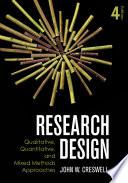
Introduction to Qualitative Research Methods
The Search for Meanings
This is a book on how to conduct qualitative research and should provide those unfamiliar with qualitative methods with an adequate introduction, an overview of the range of different approaches, and guidance on how to conduct a study.
- ISBN 10 : UOM:39015016123971
- Judul : Introduction to Qualitative Research Methods
- Sub Judul : The Search for Meanings
- Pengarang : Steven J. Taylor, Robert Bogdan,
- Kategori : Social Science
- Penerbit : Wiley-Interscience
- Bahasa : en
- Tahun : 1984
- Halaman : 302
- Google Book : http://books.google.co.id/books?id=cwlHAAAAMAAJ&dq=intitle:Qualitative+Research+Methodology&hl=&source=gbs_api
-
Ketersediaan :
This is a book on how to conduct qualitative research and should provide those unfamiliar with qualitative methods with an adequate introduction, an overview of the range of different approaches, and guidance on how to conduct a study.









